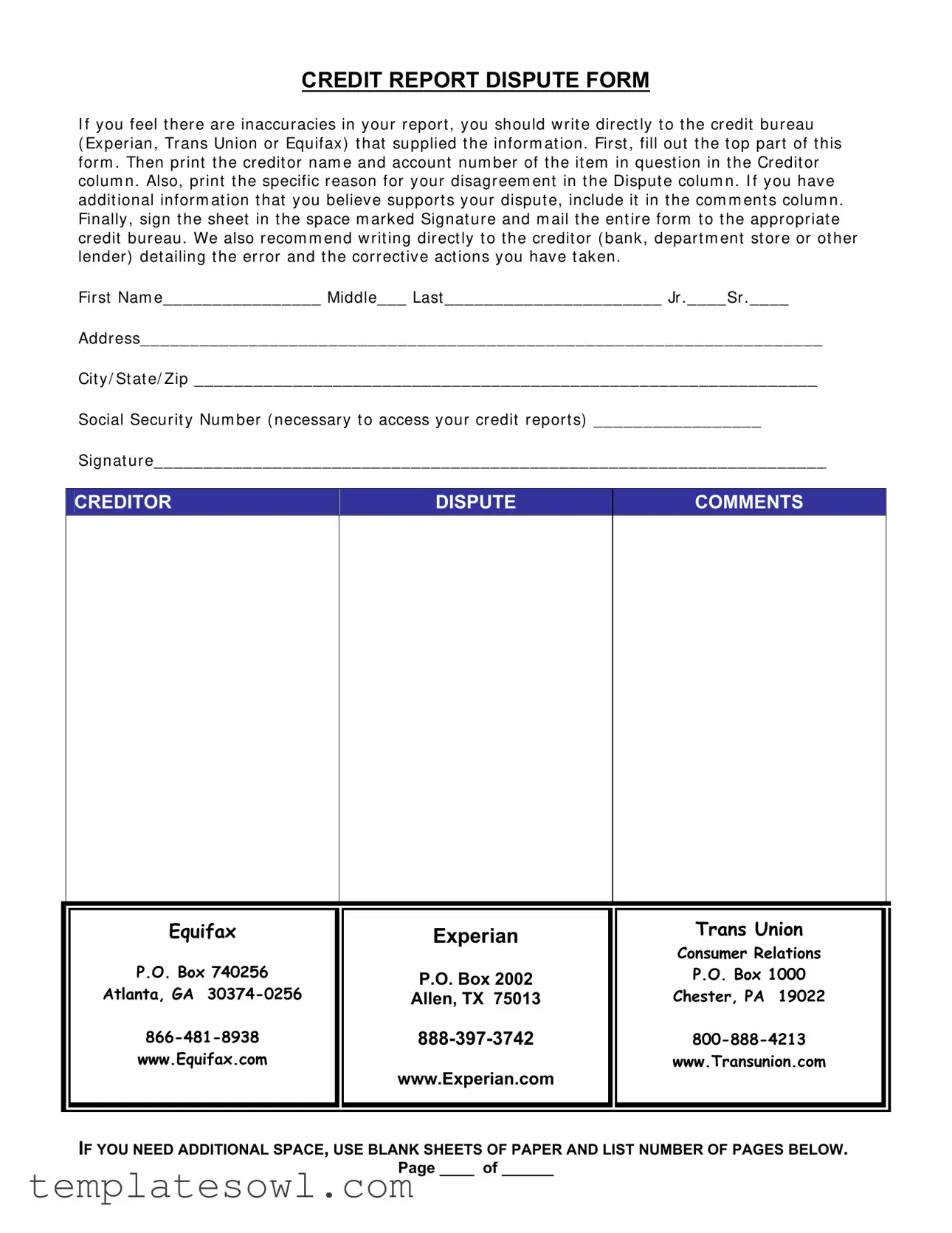What is the purpose of the Dispute Transunion form?
The Dispute Transunion form is designed for individuals who believe there are inaccuracies in their credit reports provided by TransUnion. By filling out this form, users can formally challenge incorrect or misleading information, ensuring that their credit report accurately reflects their financial history. This process is critical in maintaining a good credit score, which can impact future borrowing capabilities.
How do I fill out the Dispute Transunion form?
Filling out the form is straightforward. Start by entering your first name, middle name, last name, and suffix if applicable. Next, provide your complete address, including city, state, and zip code. It's essential to include your Social Security number as it is necessary for accessing your credit reports. After completing the personal information section, move on to the creditor information. Print the name and account number of the item you are disputing, and clearly explain your reason for the dispute. If you have any additional supportive information, include it in the comments section. Finally, remember to sign the form before mailing it to the appropriate credit bureau.
Where do I send the completed Dispute Transunion form?
Once you have completed the form, you will need to mail it to TransUnion's Consumer Relations address. The correct address is as follows: Trans Union Consumer Relations, P.O. Box 1000, Chester, PA 19022. It’s advantageous to send your dispute via certified mail, so you have proof of submission. Keeping a copy of the filled form for your records is also a wise move.
What happens after I submit the form?
Upon submitting your Dispute Transunion form, TransUnion is required to investigate your claim. They will typically investigate the disputable information within 30 days. During this time, they may reach out to the creditor who provided the disputed information to verify its accuracy. After the investigation is complete, you will receive a report detailing the findings, which will inform you whether the information was changed or confirmed.
Can I dispute more than one item on the same form?
While it is possible to dispute multiple items, it is often recommended to focus on one at a time for clarity. If you choose to dispute more than one item on the same form, be sure to list each creditor, their respective account numbers, and provide a clear reason for each dispute in the comments section. This way, TransUnion can specifically address each claim within your submission.
Should I contact the creditor as well?
Yes, contacting the creditor directly is highly advisable. After submitting your dispute to TransUnion, you should also inform the creditor of the error. Providing them with details about the inaccuracies and any corrective action you've taken can streamline the resolution process. This proactive step helps ensure that both your credit report and the creditor's records are aligned, preventing future issues.

